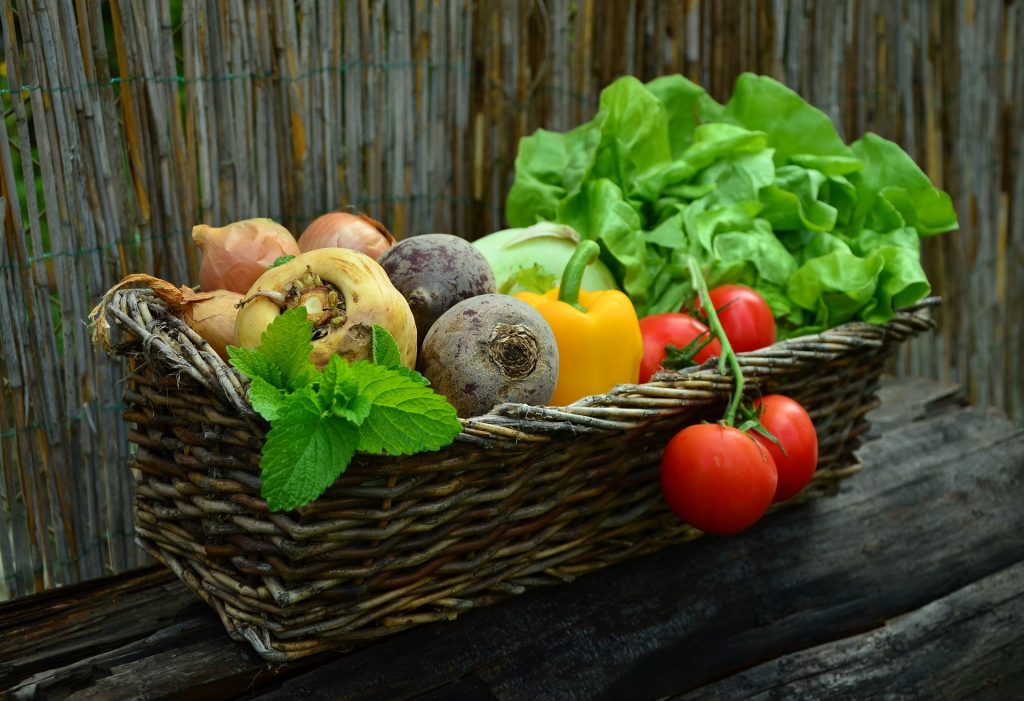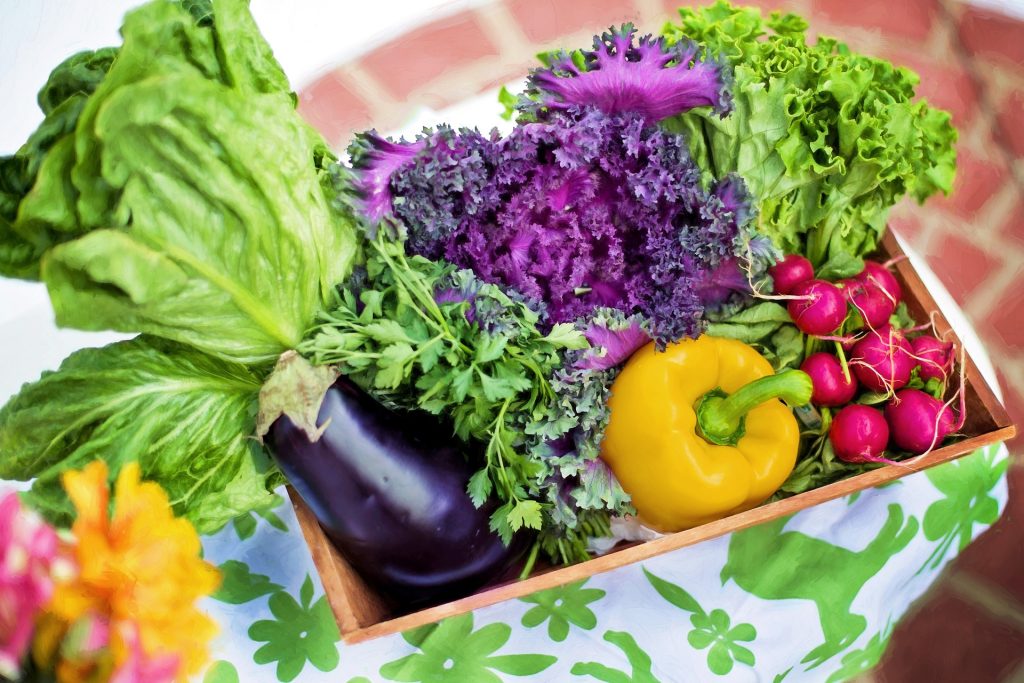Top 10 Vegetables To Grow In Raised Planter Beds, Raised planter beds are a great way to grow vegetables in a compact and controlled environment. They offer many benefits over traditional in-ground gardening, including better soil quality, improved drainage, and more accessible planting and harvesting. If you’re new to raised planter beds or are looking for ideas for what vegetables to grow, this blog post is for you!
In this post, we will take a look at the top 10 vegetables that are well suited to growing in raised planter beds. Whether you’re an experienced gardener or just starting out, these vegetables are a great place to start as they are easy to grow, yield a plentiful harvest, and are delicious to eat!

So, without further ado, let’s dive in and discover the Top 10 Vegetables To Grow In Raised Planter Beds
Description and Benefits of Each Vegetable
Tomatoes: Easy to grow and rich in nutrients, tomatoes are a staple in many home gardens.
Bell Peppers: Sweet and colorful, bell peppers add flavor and nutrition to meals.
Lettuce: Quick to grow and packed with vitamins, lettuce is a great option for fresh salads.
Carrots: Crunchy and sweet, carrots are a favorite root vegetable for raised planter beds.
Squash: Versatile and flavorful, squash comes in many varieties and is great roasted or in soups.
Cucumbers: Crisp and refreshing, cucumbers are a staple in salads and sandwiches.
Radishes: Spicy and crunchy, radishes are a great addition to tacos or salads.
Green Beans: Nutritious and easy to grow, green beans are a summer staple in many gardens.
Beets: Nutritious and delicious, beets add color and flavor to salads and roasts.
Herbs: Fresh herbs add flavor to cooking and can be grown in raised planter beds with ease.
Suitable Growing Conditions for Each Vegetable
Tomatoes: Full sun and well-draining soil
Bell Peppers: Full sun and well-draining soil
Lettuce: Partial shade and well-draining soil
Carrots: Full sun and well-draining soil
Squash: Full sun and well-draining soil
Cucumbers: Full sun and well-draining soil
Radishes: Full sun and well-draining soil
Green Beans: Full sun and well-draining soil
Beets: Full sun and well-draining soil
Herbs: Full sun or partial shade and well-draining soil
Maintenance Requirements for Each Vegetable
Tomatoes: Regular watering and occasional staking for support
Bell Peppers: Regular watering and occasional pruning for better air flow
Lettuce: Regular watering and occasional thinning for proper growth
Carrots: Regular watering and occasional weeding for optimal growth
Squash: Regular watering and occasional trellising for support
Cucumbers: Regular watering and occasional trellising for support
Radishes: Regular watering and occasional thinning for proper growth
Green Beans: Regular watering and occasional trellising for support
Beets: Regular watering and occasional thinning for proper growth
Herbs: Regular watering and occasional pruning for optimal growth.

Top 10 Vegetables To Grow In Raised Planter Beds Choosing the Right Vegetables for Your Planter Bed
Consideration of Your Climate and Growing Conditions
Growing conditions such as climate, soil type, and temperature can greatly affect the growth and success of your vegetables. Some vegetables thrive in warm weather, while others are better suited for cooler climates. Make sure to research the growing conditions for the vegetables you are interested in growing and choose those that are best suited for your area.
Availability of Sun Exposure and Water
Vegetables require different amounts of sun exposure and water to thrive. Consider the amount of sun exposure available in your planter bed when choosing your vegetables. Some vegetables, such as lettuce and spinach, need at least six hours of sunlight a day, while others, like tomatoes and peppers, require a minimum of eight hours. Make sure you have adequate water sources nearby and that you can easily water your vegetables.
Space Constraints and Size of Your Raised Planter Bed
The size of your raised planter bed and the amount of space you have available will also play a role in your vegetable selection. Some vegetables, such as carrots and beets, can be grown in tight spaces, while others, like corn and beans, need a lot of room to grow. Make sure to choose vegetables that will fit in your planter bed and have room to grow.
By considering your climate, sun exposure, water sources, and available space, you can choose the right vegetables to grow in your raised planter bed and enjoy a bountiful harvest.
Top 10 Vegetables To Grow In Raised Planter Beds Tips for Maximizing Vegetable Growth
Proper Soil and Compost Mixture
- The foundation for a successful vegetable garden is having the right soil mixture.
- The soil in raised planter beds should be a mixture of topsoil, compost, and organic matter.
- This mixture provides plants with the necessary nutrients, water, and air to grow and produce a bountiful harvest.
Appropriate Planting Techniques
- Proper planting techniques are essential for maximizing vegetable growth.
- It’s important to follow recommended spacing guidelines and to properly plant seeds or seedlings.
- This ensures that plants have enough room to grow and receive the light and air they need to thrive.
Efficient Watering and Fertilizing Methods
- Proper watering is also crucial for maximizing vegetable growth.
- Determining the right frequency and amount of water for each vegetable can be a bit of a trial-and-error process, but it’s important to get it right.
- Proper fertilization is also key, with different vegetables requiring different types and amounts of fertilizer.
- With the right soil mixture, planting techniques, and watering and fertilizing methods, your raised planter bed vegetables are sure to thrive.
Top 10 Vegetables To Grow In Raised Planter Beds Common Challenges and Solutions
Pest and Disease Control
Growing vegetables in raised planter beds can make it easier to control pests and diseases. However, it’s still essential to take steps to minimize problems. Some common pests include aphids, whiteflies, and mites, which can be controlled with insecticidal soap or neem oil. Diseases such as powdery mildew, blight, and wilt can be prevented by choosing resistant varieties, proper spacing, and good air circulation.
Dealing with Limited Space
Raised planter beds are often used in small spaces, such as balconies or patios, where there is limited room for growing vegetables. To maximize the space, it’s important to choose compact varieties, such as bush beans, cherry tomatoes, and baby carrots, and to use trellises, supports, and other vertical growing methods.
Overcoming Adverse Weather Conditions
In some regions, adverse weather conditions, such as drought, heat, or frost, can pose a challenge for growing vegetables. To overcome these issues, it’s crucial to choose plants that are suited to your local climate and to provide them with adequate protection, such as shade cloth or frost blankets, when needed. Additionally, using drought-tolerant soil mixes, and using efficient watering techniques, such as drip irrigation or mulching, can help to conserve water and minimize the impact of hot weather.
Growing vegetables in raised planter beds can be a rewarding and fulfilling experience. With the right knowledge and techniques, you can grow a variety of fresh and healthy vegetables right in your own backyard. Raised planter beds provide numerous benefits, including better soil drainage, improved growing conditions, and greater control over your vegetable garden.
When it comes to growing vegetables in raised planter beds, there are a few key things to keep in mind. Start by choosing the right vegetables for your climate and conditions, and be sure to provide them with the proper soil and compost mixture, planting techniques, and watering and fertilizing methods. You may also face challenges such as pest and disease control, limited space, and adverse weather conditions, but there are solutions to these issues as well.
We hope this blog post has inspired you to start your own vegetable garden in a raised planter bed. Remember, growing your own food can be an incredibly satisfying and enjoyable experience, and the benefits of fresh and healthy produce cannot be beat. So get started today, and happy gardening!
Drip Irrigation Installation & Repairs
If you’re looking for a hassle-free way to keep your plants healthy and vibrant, consider installing a drip irrigation system. Drip irrigation is a highly efficient method of watering that delivers water directly to the root zone of your plants, reducing water loss due to evaporation and ensuring that your plants get the water they need to thrive. At American Property Maintenance, we specialize in installing high-quality drip irrigation systems that are tailored to your specific needs and preferences. Our team of experienced professionals will work closely with you to design and install a system that meets your unique requirements and provides reliable, low-maintenance watering for your plants.
With a drip irrigation system from American Property Maintenance, you can enjoy a beautiful, healthy garden without the hassle and expense of traditional watering methods. So why wait? Contact us today to schedule a consultation and start enjoying the benefits of drip irrigation for your growing vegetables.
